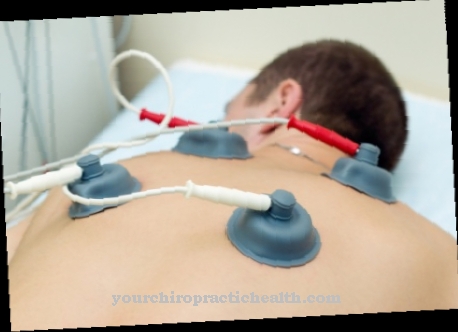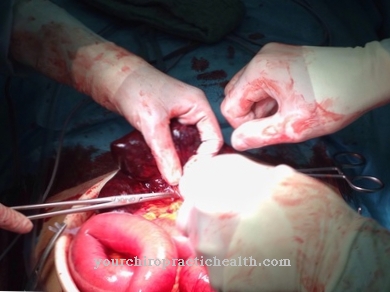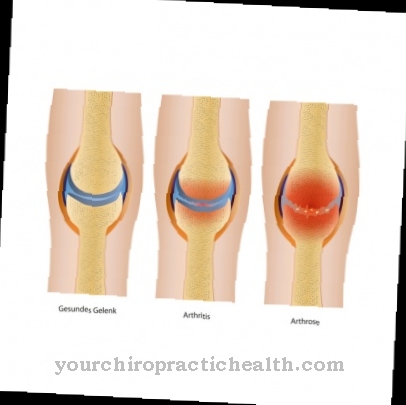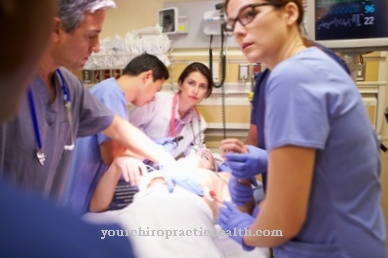The Electroconvulsive therapy was invented in 1937 by the two Italian doctors Bini and Cerletti for the treatment and relief of mental disorders. This form of therapy is still used in psychiatry today, but it is controversial even among experts. For certain psychiatric illnesses, the benefit has been proven by studies.
What is electroconvulsive therapy?

The ECT works with electric current, which is why the term electroshock therapy was used for a long time, but it has completely disappeared from medical parlance.
Electroconvulsive therapy or Electroconvulsive therapy, ECT, is a form of treatment that has been used exclusively for the treatment of mental disorders and psychiatric clinical pictures and is also used in isolated cases. In the 1970s and 1980s, electroconvulsive therapy disappeared completely from the spectrum of psychiatric treatments. The method was so controversial in these decades that even the most severe cases were no longer treated with it.
Initially forgotten, electroconvulsion therapy is being used more and more nowadays. A treatment sequence is only possible with strict indications and under specialist psychiatric supervision. Since its invention two years before the outbreak of World War II, electroconvulsive therapy has been the subject of heated and controversial discussions, including in public.
Due to the supposed work with electric shocks, this form of therapy had a bad reputation from the start, and nothing has changed to this day. Even when there is an indication, it is still difficult to convey to the relatives of a patient why electroconvulsive therapy should be used.
Function, effect & goals
The first attempts with electroconvulsive therapy were carried out on a mentally completely healthy test person, however, against his will. This patient was made available to the two inventors of the method by the police for therapy testing, a process that would be unthinkable today. In the first few years after the trial phase, electroconvulsive therapy should actually be attempted to treat homosexuality. During National Socialism, ECT was even used without any indication and as a punishment.
From these facts, the picture of this form of therapy that is still bad today arose. The literary film adaptation "One Flew Over the Cuckoo's Nest" shows the widespread use of electroconvulsive therapy for punitive purposes. The benefit for some psychiatric illnesses is still undisputed today. The so-called pernicious catatonia, for example, would lead to death without the use of electroconvulsive therapy. The main indications for electroconvulsive therapy are so-called endogenous delusional depression with and without the risk of suicide, all forms of catatonia and as the therapy of choice in the event of complete failure of neuroleptic treatment.
Since the aforementioned pernicious catatonia is usually particularly fulminant, the rapid use of electroconvulsive therapy has so far been the only life-saving measure. Much research has already been carried out on the subject of electroconvulsive therapy, but its exact mechanism of action has not yet been clearly clarified. If a patient has a seizure, according to one theory, hormones and neurotransmitters in the bloodstream are completely out of whack.
The immediate use of the ECT would result in a sudden reorganization, so to speak, a reset of the unbalanced structures. But even this theory, which is common in specialist circles, has by no means been scientifically proven. Patients usually have to endure the procedure more often, because to achieve a lasting effect, up to 12 applications with an interval of at least 2 days are required. The maximum application rate must not exceed 3 times a week, since the side effects would otherwise endanger any therapeutic success.
If possible, the patient and his relatives must be informed about this before each therapy session; direct consent is only required in life-threatening emergencies. Before the actual ECT, a short anesthesia with stable muscle relaxation and oxygen ventilation must be initiated by an experienced anesthetist. Ventilation and intubation should be available in emergencies, but prophylactic intubations are not provided when performing ECT. Overall, the intubation rate with electroconvulsion therapy is very low.
Mouthguards are required so that lips and teeth cannot be injured during therapy. The current is then switched on via a generator for a period of 3 to 5 seconds and at a strength of 600 milliamps. Doing this will cause a seizure. The electrodes are placed unilaterally and never on the dominant hemisphere. This is an empirical value from many treatments, because many more side effects occurred with the bilateral derivations, which are often common.
You can find your medication here
➔ Medicines to calm down and strengthen nervesRisks, side effects & dangers
The use of electroconvulsive therapy harbors risks, sometimes also serious side effects, dangers and peculiarities. The side effects always appear after the treatment, for example in the form of confusion and slight memory disorders. However, these phenomena are reversible, so they spontaneously resolve themselves after a few hours to days. Amnestic impairments were frequent, but since the preference for unilateral discharges they have become a rare occurrence.
The most important contraindications of electroconvulsive therapy are increased intracranial pressure, aneurysms, i.e. vascular sacs in the large blood vessels and in the brain, and acute myocardial infarction. However, the presence of a pacemaker or pregnancy are no contraindications for treatment with ECT. Therefore, appropriate, detailed examinations are necessary before treatment. Permanent brain damage is not to be expected even after repeated use of electroconvulsive therapy.

























.jpg)

.jpg)
